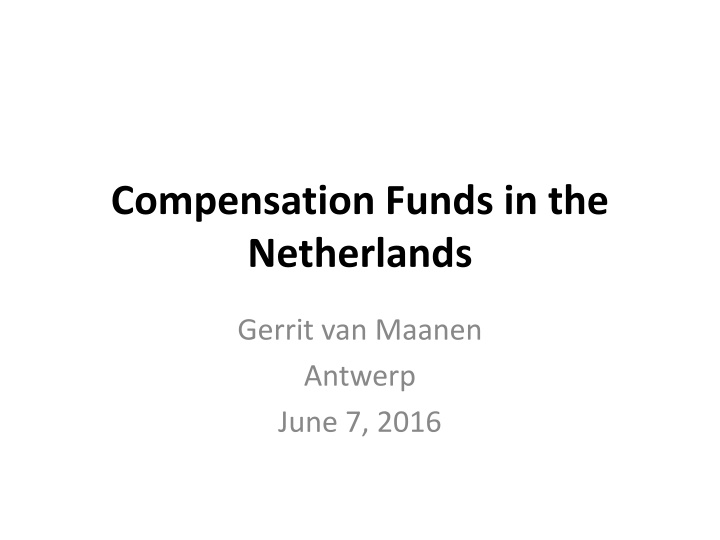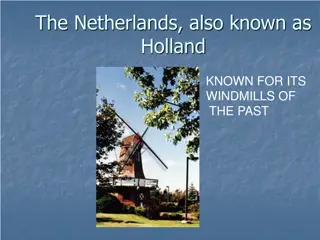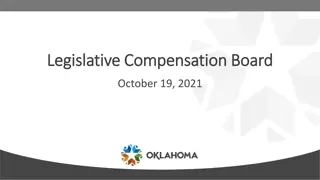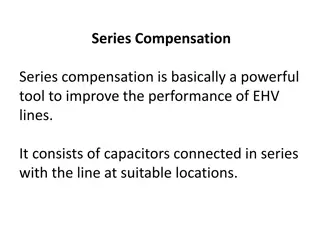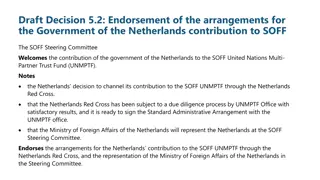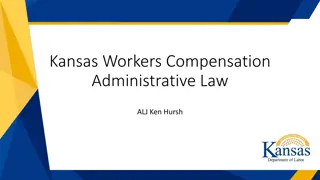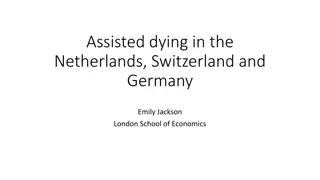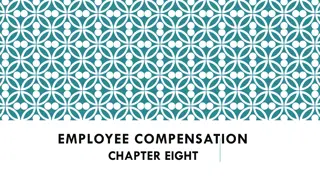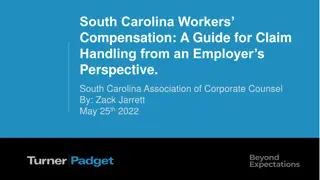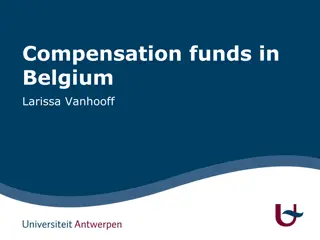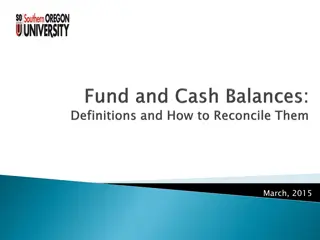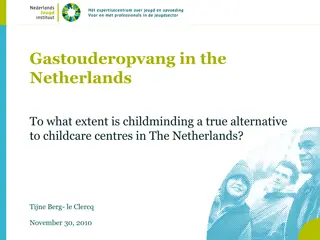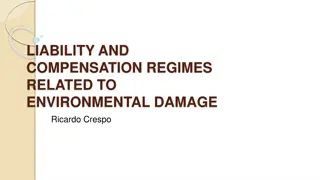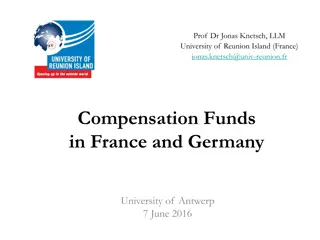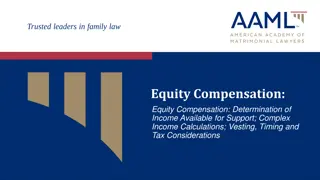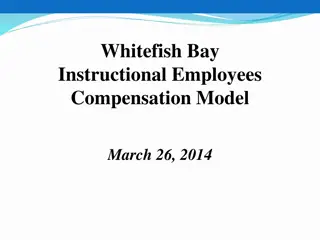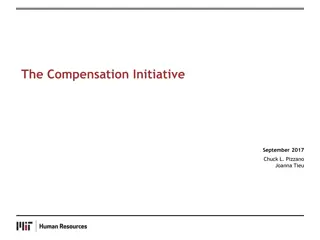Compensation Funds in the Netherlands: Overview and Examples
Understanding the concept of compensation funds in the Netherlands, their purpose, creation, types, reasons for establishment, and comparison with Tort Law. Explore specific examples like the Compensation Fund for Victims of the Bijlmer Catastrophe and the Legionella Compensation Fund. Learn about the WTS law on compensation for catastrophes, providing a structured approach to compensating victims of disasters.
Download Presentation

Please find below an Image/Link to download the presentation.
The content on the website is provided AS IS for your information and personal use only. It may not be sold, licensed, or shared on other websites without obtaining consent from the author.If you encounter any issues during the download, it is possible that the publisher has removed the file from their server.
You are allowed to download the files provided on this website for personal or commercial use, subject to the condition that they are used lawfully. All files are the property of their respective owners.
The content on the website is provided AS IS for your information and personal use only. It may not be sold, licensed, or shared on other websites without obtaining consent from the author.
E N D
Presentation Transcript
Compensation Funds in the Netherlands Gerrit van Maanen Antwerp June 7, 2016
Outline Disclosure Overview compensation funds in the Netherlands Why created? Different types: ad hoc, more structural Different reasons: natural disasters, man-made disasters, shortcomings of Tort Law Why (not) compensation funds? Comparison with Tort Law Superfund?
Why Compensation Funds? First Party Insurance unavailable In case of disasters: political pressure to do something No solvent liable party Problems with establishing liability: Fault Causal connexion Damage
Situation in the Netherlands Ad hoc solutions. From incident to incident Natural disasters; an earthquake in Southern Limburg, flooding in South-East Netherlands and heavy rains Man-made disasters; Enschede fireworks disaster in 2000 Bovenkarspel legionella outbreak Q fever in the South of The Netherlands Shooting in Alphen aan de Rijn Crash of the MH17 on 17 July 2014 in the Ukraine
Specific General Act: WTS Law on compensation for Catastrophes (Wet Tegemoetkoming Schade bij Rampen); WTS WTS was created after the flooding in the South, to provide a more or less - general tool for compensation to the victims of catastrophes The goal of the WTS was to offer a more structural solution to the compensation of victims of catastrophes instead system of ad hoc solutions
Specific ad hoc Funds; some examples Compensation Fund to Victims of the Bijlmer Catastrophe Catastrophic air crash with an El Al plane on apartment building in Amsterdam neighbourhood Bijlmer Victims receive a lump sum payment of 2,000,-
Legionella Compensation Fund Legionella epidemic in Bovenkarspel (North Holland) during Whirlpool exposition Contamination usually takes place when contaminated water is emitted in the form of very small particles which are subsequently inhaled by victims Government made an amount of approximately 1,000,000 available: - lump sum payment of 2,000,- - descendants of deceased 5,000
Fireworks explosion in Enschede More then 20 people dead; more then 100 wounded Damage several hundreds of millions of Euros WTS 1998 not declared applicable (insurable damage) Compensation through a private - national catastrophes fund (Stichting Nationaal Rampenfonds NRF) Private initiative to which the government (generously) donates funds
More structural arrangements: mesothelium Victims of asbestos A victim can receive (financed through the public budget) a lump sum payment of 15,882 under the following conditions: he/she had to be alive on 6 June 1997; he/she incurred so-called maligne mesothelium as a result of exposure to asbestos during the work; no financial compensation from an employer was obtained and no possibilities of a claim on the employer exist either because the employer can not be identified, does not exist any more, is insolvent or because the statute of limitations has past
Compensation fund for victims of violent crimes (Schadefonds Geweldsmisdrijven) Provides compensation for personal injury damage caused by an intentional violent crime which caused serious personal injury to the victim Subsidiary fund (social security and private insurance have priority over the fund) that provides some compensation to the victim based on equity Maximum of 35.000 Proof of damage facilitated Financed through the general public budget Between 6,000-8,000 victims apply to this fund on a yearly basis In recent years there are an increasing number of demands and compensations Partially due to the fact that insurers exclude all damage from coverage that has been caused intentionally
Fund for the compensation of air pollution A sudden polluting act Provides compensation based on equity, de facto the full loss of the successful claimant is often compensated Subsidiary character Financed through the public budget Most of the compensations relate to the agricultural sector and concern damage to crops Personal injury damage is almost never compensated and ecological damage is not compensated On average this fund did not pay more that approximately 100,000 on a yearly basis Importance of this fund compared to the real impact of air pollution damage can be considered as rather small
Solidarity Fund for traffic damage (Waarborgfonds Motorverkeer) Civil liability In cases of theft, Joy-riding, run away accidents, uninsured owners Subsidiary character Threshold 250 Financed by all compulsory -insured motor vehicle owners and public budget
General Act: WTS Inspired by Belgium example of the catastrophes fund of 1976 Goal: to offer a more structural solution to the compensation of victims of catastrophes Applicable in case of flooding or earthquakes (considered as a catastrophe or large accident) Article 3 provides that the WTS can be declared applicable through a Royal Decree (only if the government considers the incident as a catastrophe or large accident)
Restrictions of the WTS Subsidiary character Not entitled to compensation when damage was reasonably insurable or when the victim was able to obtain compensation from another source (For instance damage to motor vehicles will not be compensated through the WTS, since that type of damage is insurable) Compensation for particular heads of damage (damage to a dwelling, commercial loss and property damage) No Pure economic loss
Limitations of the WTS in practice WTS not applicable cases of man made disaster where in principle the damage can be claimed from a liable injurer Not in case of damage caused by an airplane crash; Government indicated that in such a case liability law would apply, so that the WTS would not be applicable. The WTS therefore only can be applicable in case of damage as a consequence of natural disasters Enschede made painfully clear how limited in fact the impact of the WTS is for catastrophes that are not natural disasters
WTS Not a great success WTS mainly applies to damage caused as a result of heavy rain After six years WTS was merely applied four times Mostly in cases of heavy rainfall Not in case of serious man made disasters with heavy personal injuries like in the case of Enschede Not surprising that this WTS has been the subject of criticism in the literature
Some General Observations Subsidiary nature of most funds Social/legal basis for creating a compensation fund for this particular type of victims is in every case different Government usually simply wants to make a gesture towards the victim as an expression of solidarity of the community towards the victims Certain category of victims will receive a preferential treatment Compensation fund for air pollution damage is subject to criticism
A Superfund? Why not? Personal experience Traditional and Analytical arguments Comparison with Tort Law Why compensation funds?
Why compensation by Funds? Funds can provide a remedy for some of the shortcomings of liability law Compensation fund when the damage can not be insured (more particularly in case of flooding and earthquakes) Funds could solve problems of tort liability (like lacking proof of wrongfulness or causal link) Funds can remedy insolvency problems
Liability versus Compensation Funds Wrongfulness/fault Strict Liability Causal connection Proof of damage Sophisticated legal procedures Controlled by professionals Full compensation Insurance No fault or wrongful behaviour Causal connection Proof of damage No full compensation Specific restrictions Bureaucratic procedures Role of experts Tax payers money Unequal treatment
A (Super) fund? Why not? Funds are no panacea Misuse for political gain (sometimes) Certain categories of victims will receive a preferential treatment Always restrictions and limitations High expectations Low results
Alternatives? Reform and adaptation of Tort Law: Strict Liability, Adaptation of Causal link (Loi Badintair), Reversal burden of proof Expansion of Compulsory Insurance for Third Party Liability Social Security First party Insurance: garantie des accidents de la vie
Limited role for Compensation Funds Complementary role for shortcomings in liability systems (Solidarity Fund Traffic Accidents) Real Catastrophes (Bijlmer, Enschede) Natural disasters (Flooding) Only in specific situations were Tort Law and Social Security fail (no solvent liable party, et cetera)
